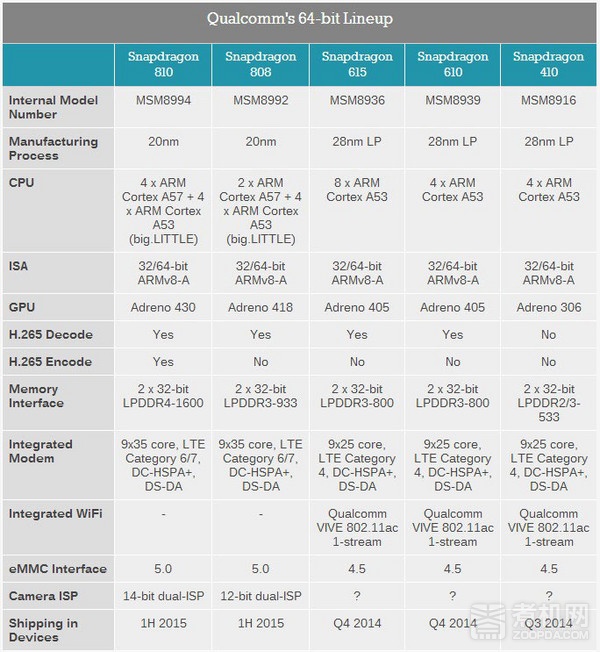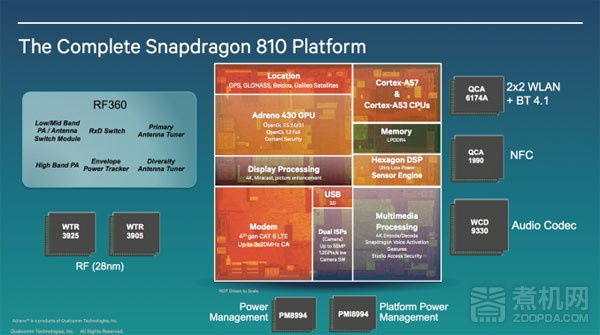As the table below shows, because their newest chips have faster speed, the rate at which Qualcomm develops their processors has changed as well. They would usually modify the framework provided by ARM to get the best results. This is what they have always done from the 8260 to the Snapdragon 800, and the end results have been impressive.
Things changed when MTK released the MTK6589. Qualcomm caused noise with their release of the 8225Q. They, then, continued to walk to the dark side.
There has not been any changes made for the 410 series other than upgrading the CPU to the A53 (A7 enhanced). Qualcomm just limited its memory frequency. The difference in the performance of the 410 series with that of the 610 series is great. The A53 framework was only a little offset by the decrease in main frequency.
The 6xx series will be the worst and most disgusting product in this era of bad taste marketing.
The difference in the 610 and 410 lies in memory support. One supports 533 while the other supports 800. Then? It’s off to the grave, but the name will change.
The writer predicts that the 615 and 610 will score higher in their benchmark tests than the 600, but it probably won’t be as practical and useful as the 600. After all, the 600 is on the same level as the quad-core A9.
So, why should A53 cores be used? ARM gives us the answer below.
The Cortex-A53 is designed 40% smaller than the A9. So where could such a small chip go?
According to ARM, the reason for the A53’s small size is because Qualcomm reduced the cache size and data structure size. At the same time, they also improved its efficiency.
The octa-core 6xx series is not only much better than the 400 but half its price as well.
If they don’t have Apple’s fate, then they’ll have Apple’s problems. This is the Fleurs Du Mal for Chinese low-end machines.
But Qualcomm shows us what they have accomplished.
Qualcomm knows the problems they face. The high-end 810’s memory supports DDR4 1600 and 25.6Gbps bandwidth. The 808 also supports DDR3 933 which has a bandwidth of 14.9Gbps.
Qualcomm also provided their two CPU chips with ISPs to solve their camera-related problems. The 808 uses a dual-core 12bit ISP while the 810 uses a dual-core 14bit ISP, which at most, can take photos up to 55mP.
Even though Qualcomm’s next generation CPUs look perfect, power consumption is its biggest obstacle. According to the amd circuit diagram, the TDP of 8 a57 cores is 30w, and for four cores, 15w. This kind of TMB may become off the charts. As for power consumption, as the Lineup presentation shows, the 810/808 will use 20nm craftsmanship which can consume less energy. But it’s been reported that Apple has already reserved of TSMC’s 20nm process in 2014.
By the end of the year, we will see quad-core and octa-core cellphones that use the 6xx series, but they probably won’t be as good as the first generation which is definitely very sad.











